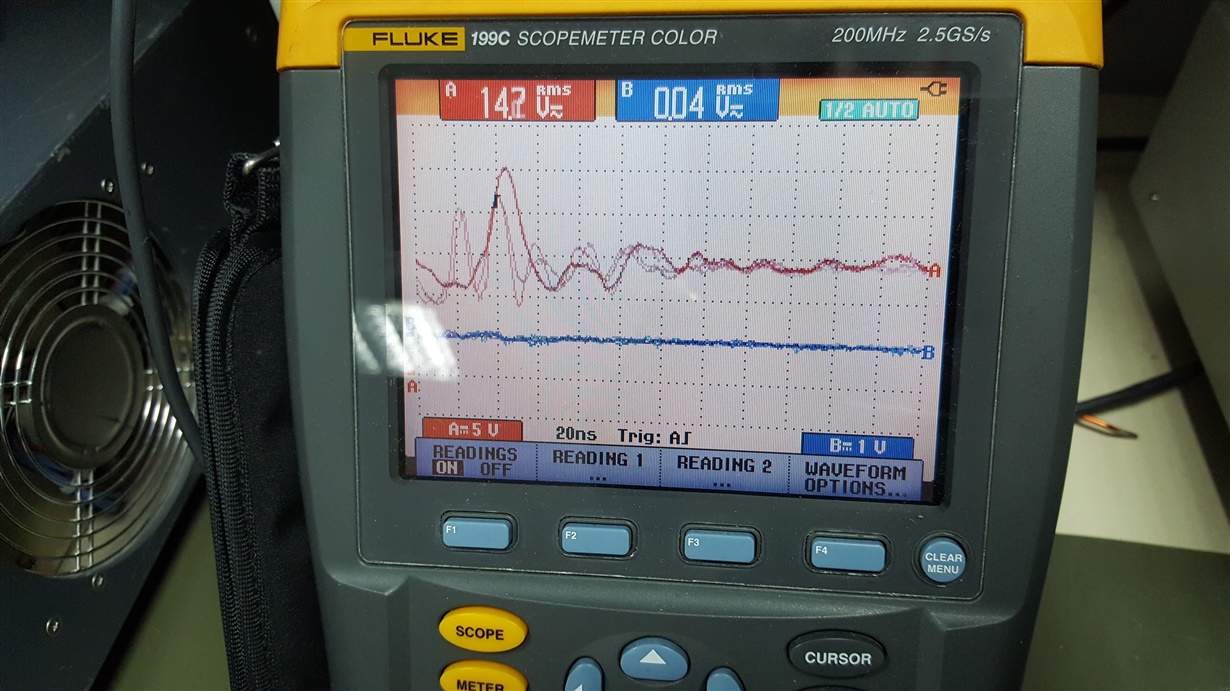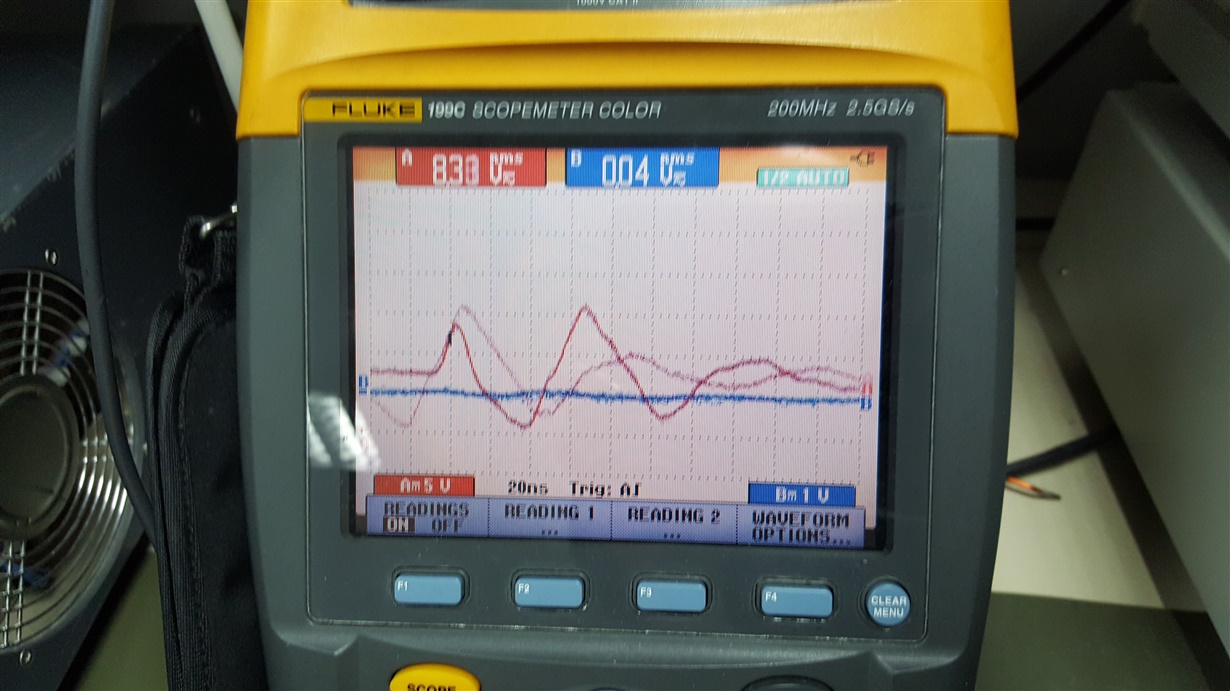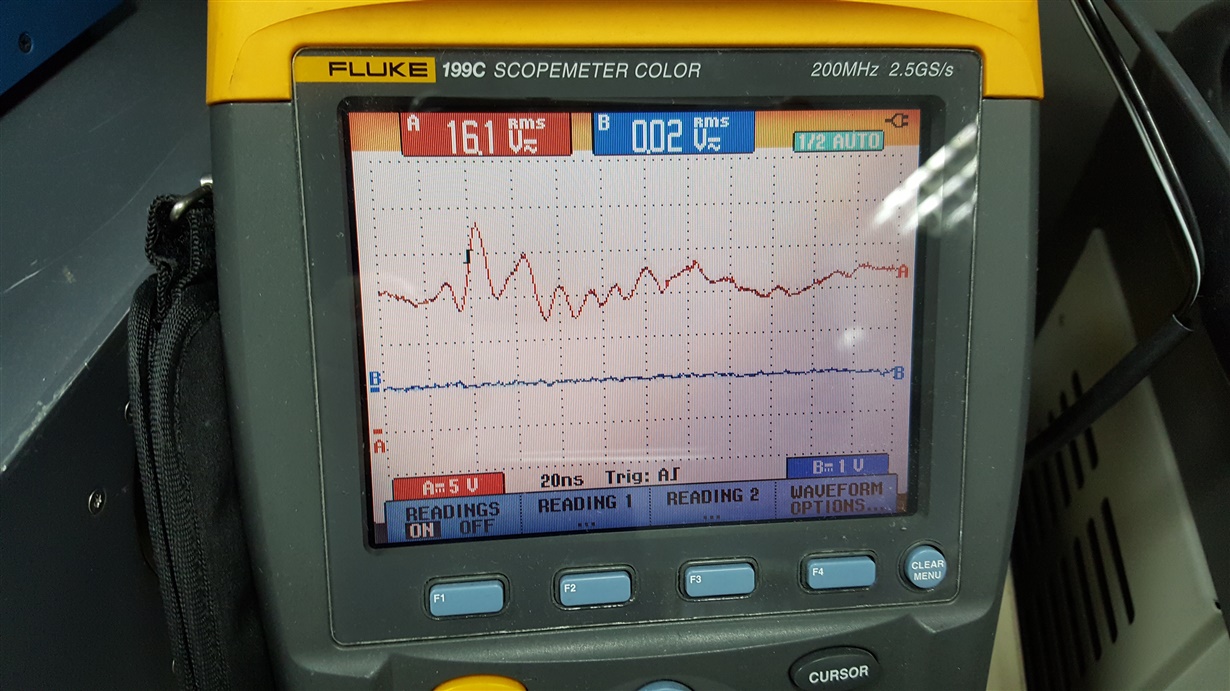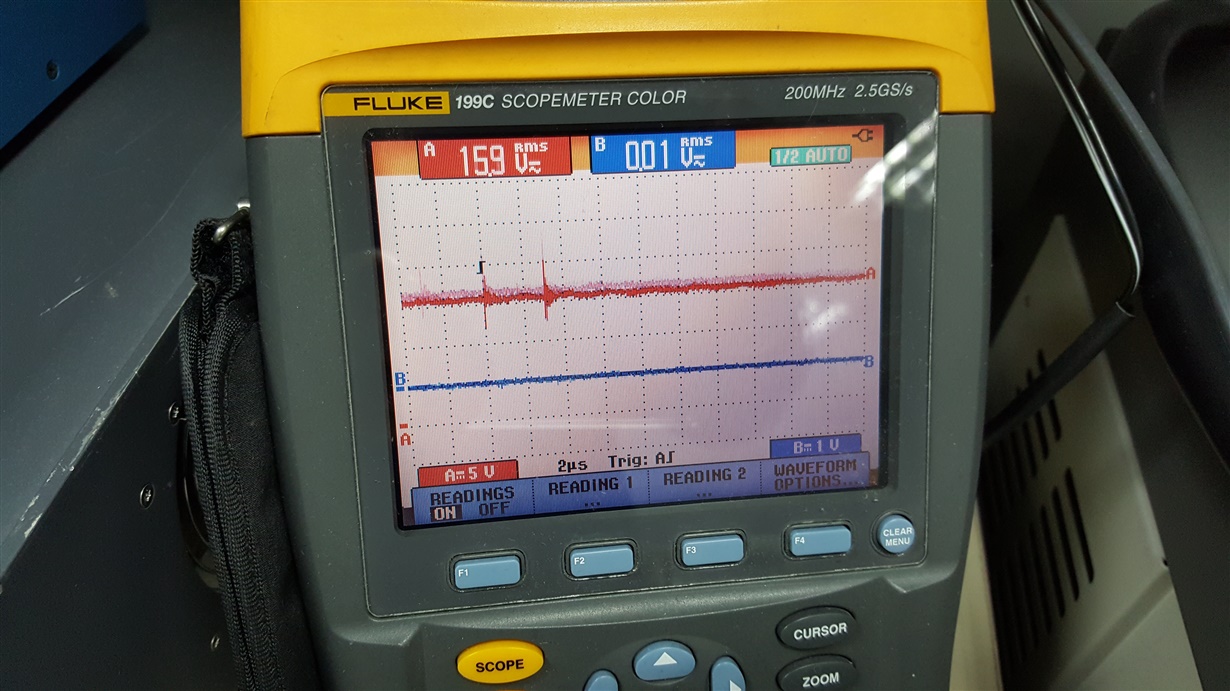Other Parts Discussed in Thread: UCC28880
Hello,
I have the 270Vdc line, and I must make auxillary power supply 15V for logic IC.
I was recommended to use UCC28881 (back converter)
I assembled the scheme in accordance with application from DATA of the component
I applied the recommended calculator to calculate the values of all components.
Cvdd = 100nF
Rfbt = 130k
Rfbb = 10k
Cfb = 800nF (470nF parallel to 330nF)
L = 400uH
Cout = 220uF
Rout = 27k
When you turn on the input voltage 270Vdc, output voltage rises to 15V, but after 150 msec it drops to 5.5V.
What am I doing wrong?
Thanks,
Leonid





